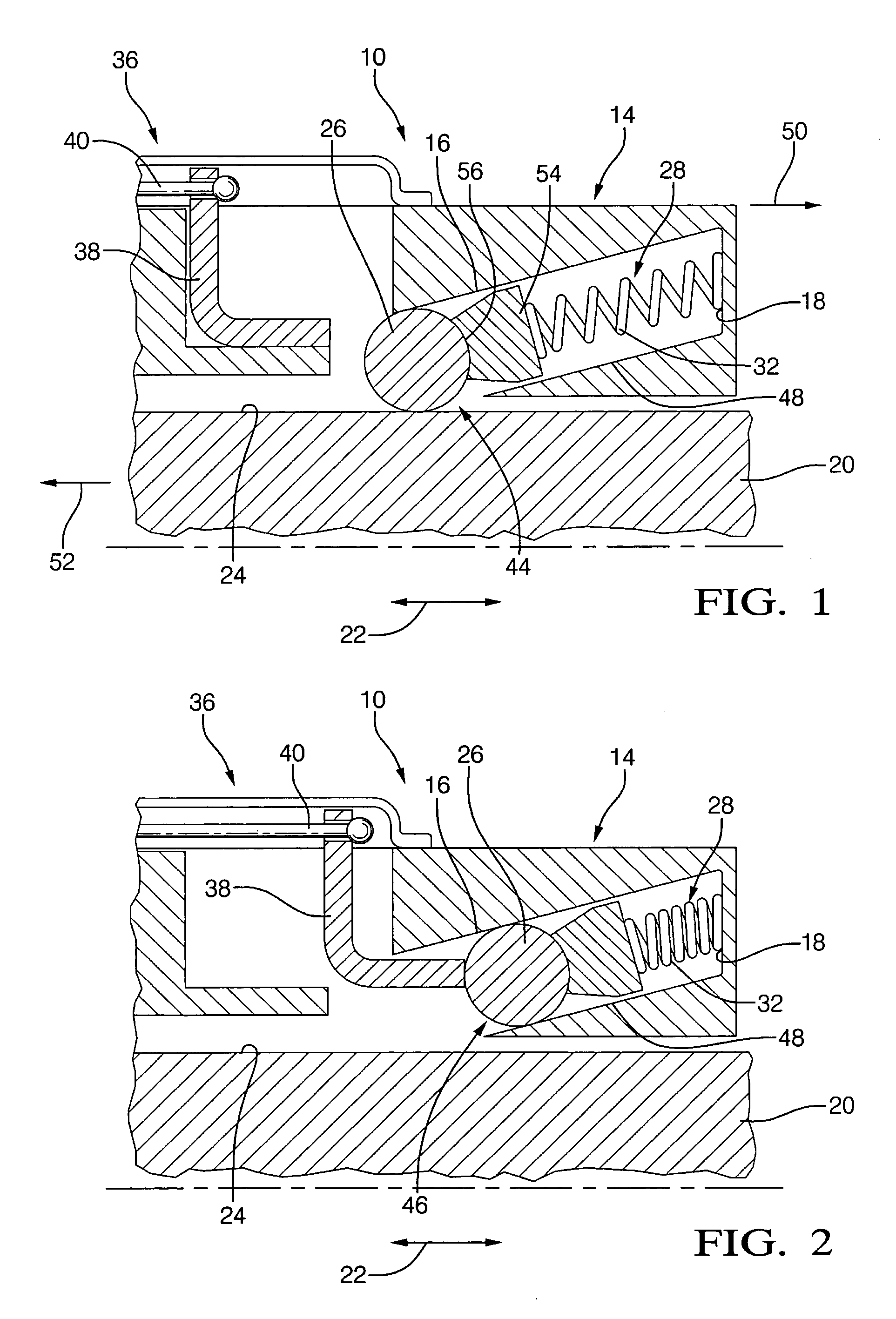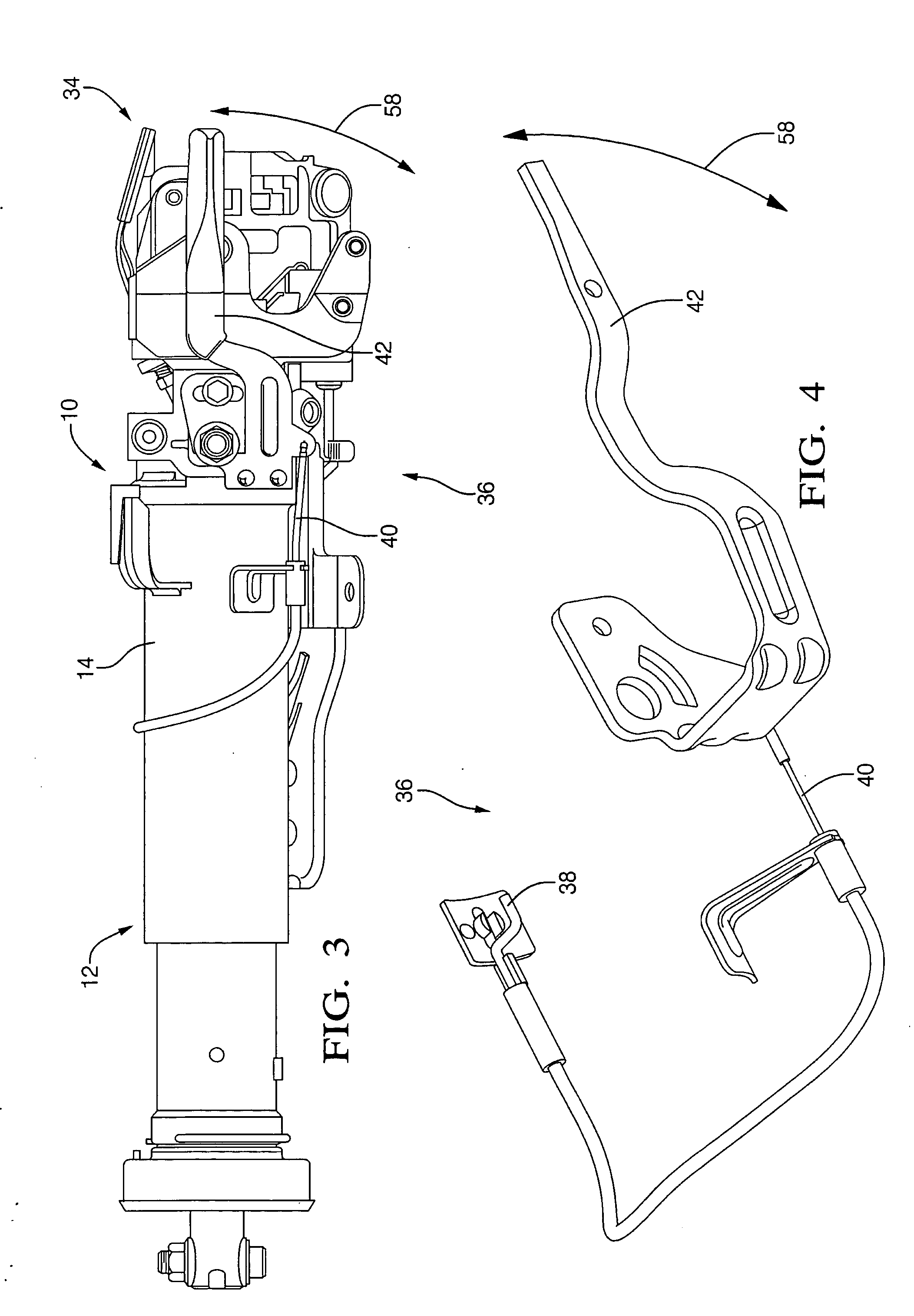Telescope wedge locking mechanism
- Summary
- Abstract
- Description
- Claims
- Application Information
AI Technical Summary
Benefits of technology
Problems solved by technology
Method used
Image
Examples
Embodiment Construction
[0014] Referring now to FIGS. 1-4, in a first exemplary embodiment of the invention, an apparatus 10 selectively prevents the collapse of a collapsible steering column 12. The apparatus 10 includes a first steering column member 14 defining first and second opposing surfaces 16, 18 that are fixedly spaced relative to one another. The apparatus 10 includes a steering wheel supporting portion 34 for supporting a steering wheel. The second surface 18 is disposed closer to the steering wheel supporting portion 34 than the first surface 16. The first steering column member 14 can be a single member defining both of the first and second opposing surfaces 16, 18 or can be two separate members fixedly associated with one another wherein one of the members defines the first surface 16 and the other member defines the surface 18.
[0015] The apparatus 10 also includes a second steering column member 20 connected to the first steering column member 14 for sliding movement 22. The second steerin...
PUM
 Login to View More
Login to View More Abstract
Description
Claims
Application Information
 Login to View More
Login to View More - R&D
- Intellectual Property
- Life Sciences
- Materials
- Tech Scout
- Unparalleled Data Quality
- Higher Quality Content
- 60% Fewer Hallucinations
Browse by: Latest US Patents, China's latest patents, Technical Efficacy Thesaurus, Application Domain, Technology Topic, Popular Technical Reports.
© 2025 PatSnap. All rights reserved.Legal|Privacy policy|Modern Slavery Act Transparency Statement|Sitemap|About US| Contact US: help@patsnap.com



